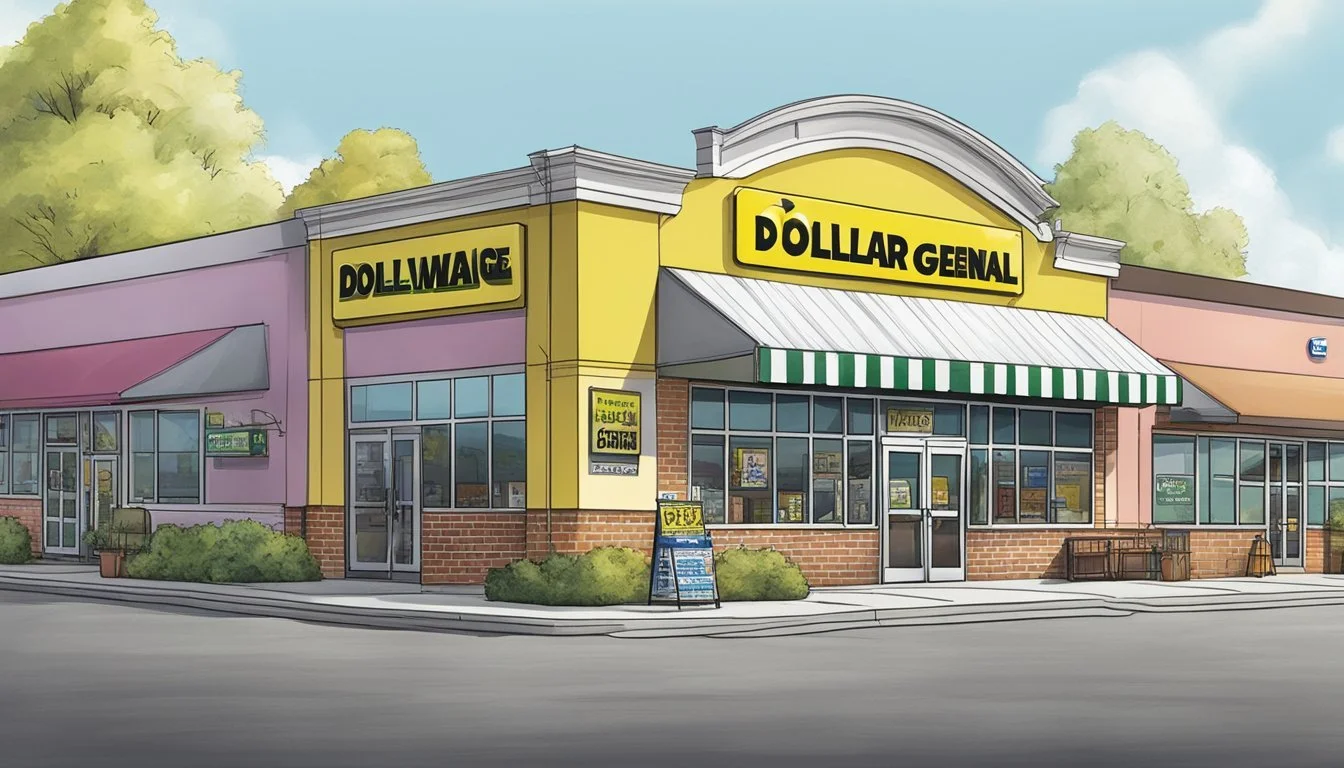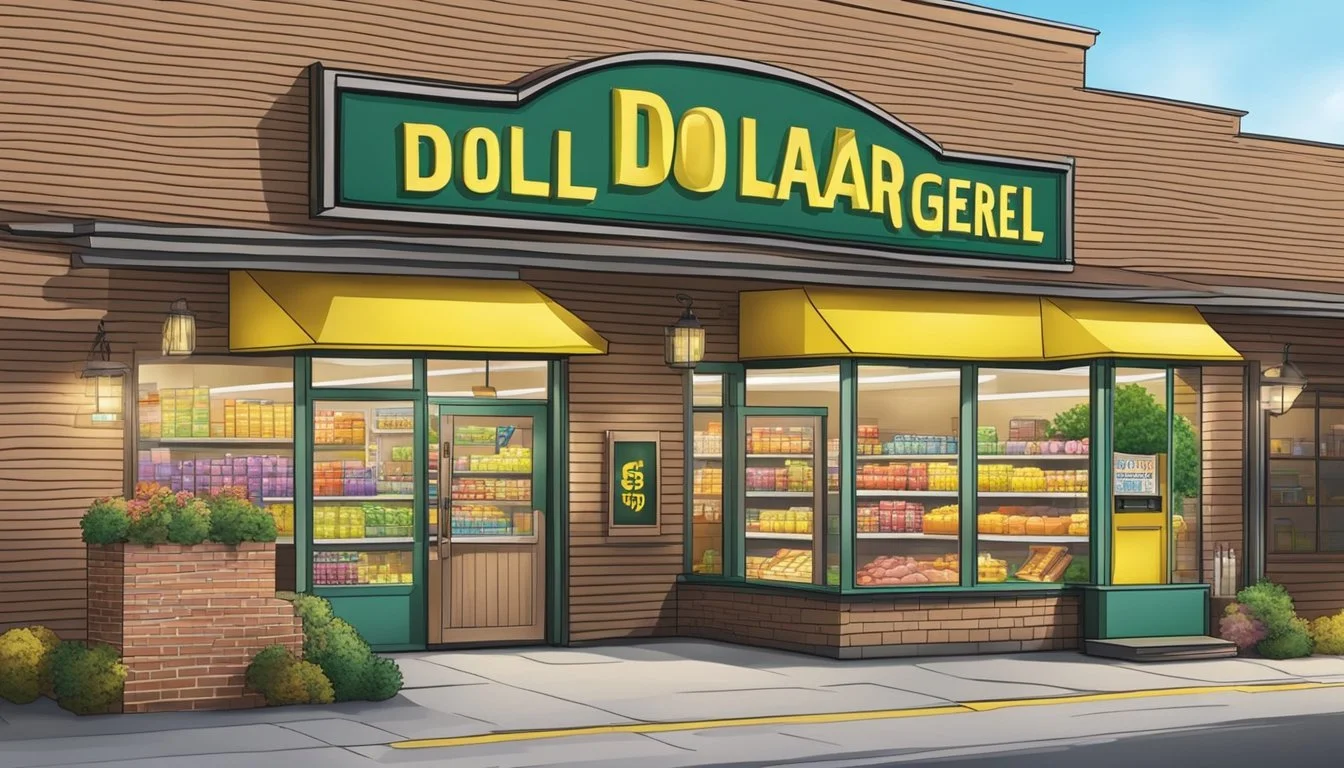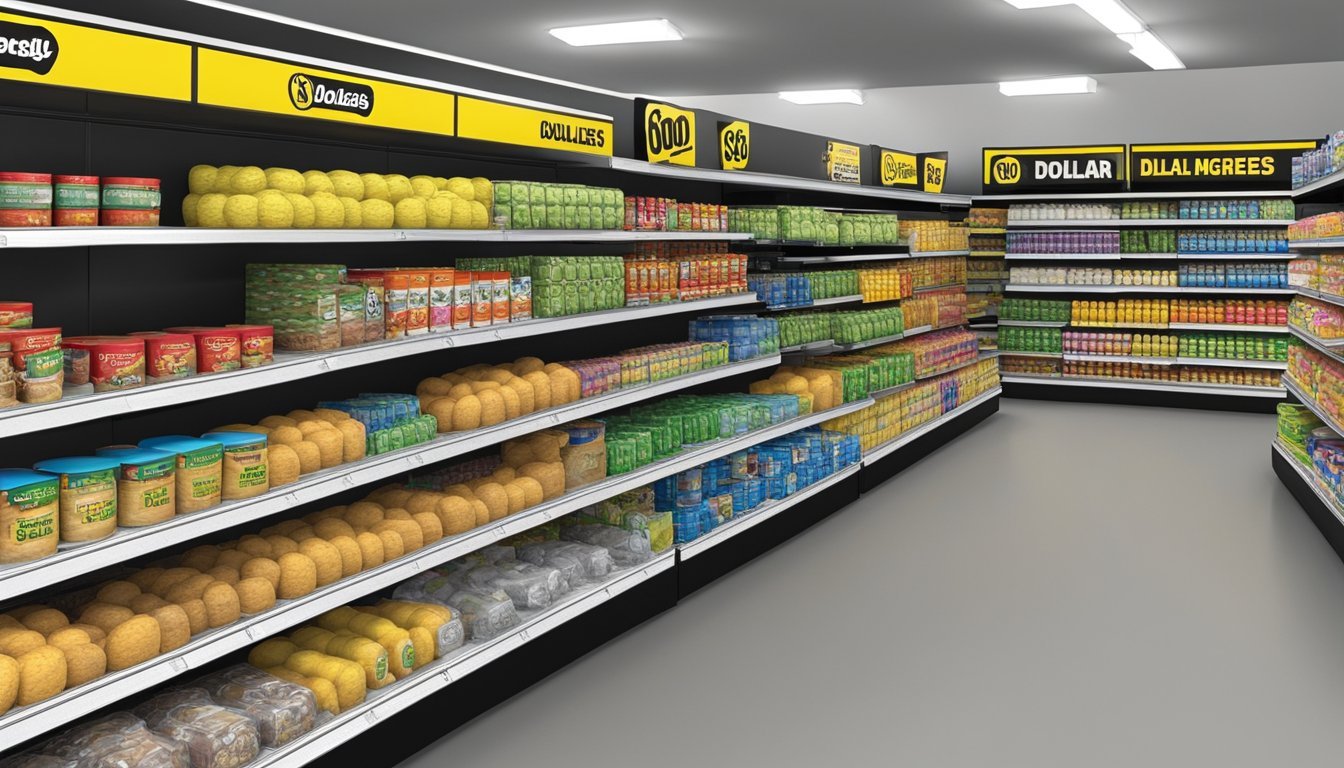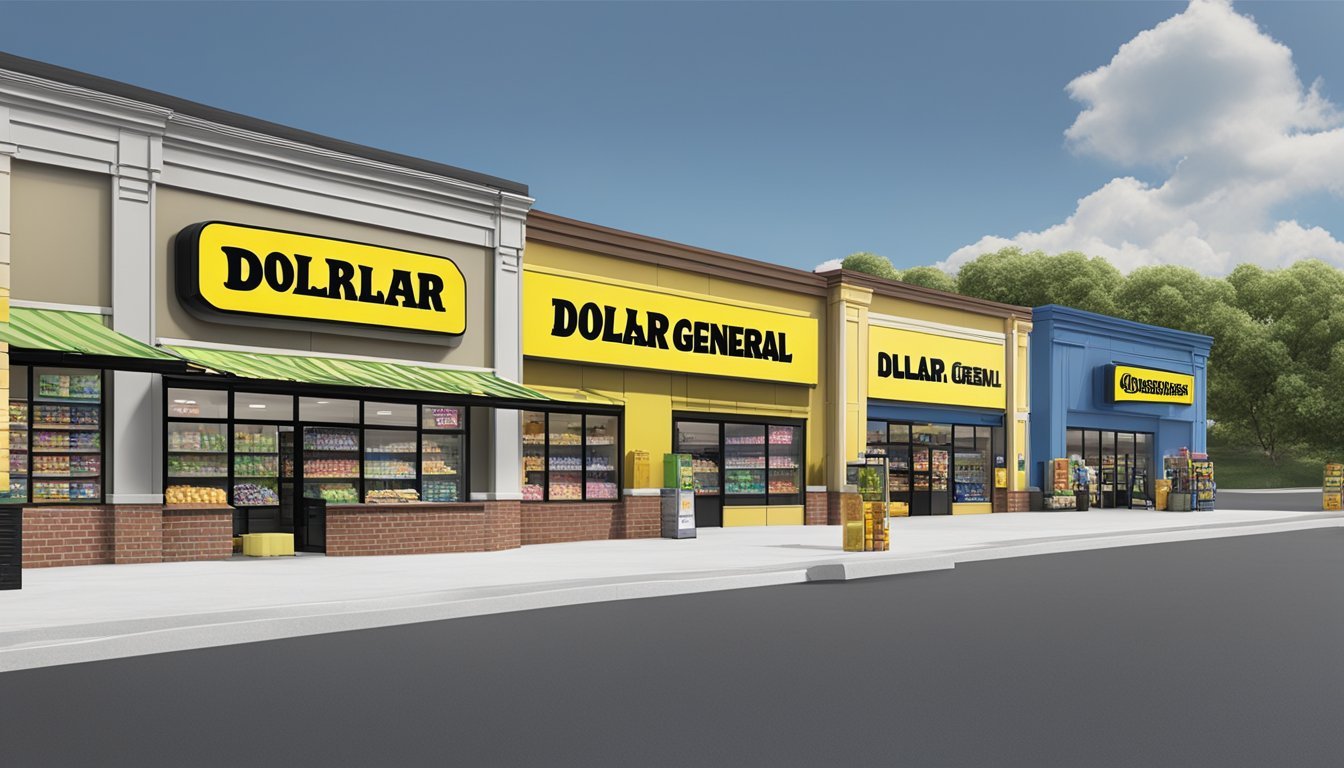Is Dollar General Cheaper Than Piggly Wiggly?
A price comparison of budget-friendly grocery options
When it comes to grocery shopping on a budget, comparing prices between different stores can lead to significant savings. Dollar General and Piggly Wiggly are two popular options for cost-conscious shoppers, each with its own pricing strategies and product offerings.
Dollar General often has lower prices on everyday essentials compared to Piggly Wiggly, especially for items like milk, bread, and eggs. This price advantage can be particularly noticeable in smaller towns where Dollar General competes directly with local grocery stores. Dollar General's focus on offering discounted prices on a wide range of products makes it an attractive option for budget-minded consumers.
Piggly Wiggly, on the other hand, emphasizes community connection and customer service. While their prices may be higher on some items, Piggly Wiggly stores often feature local products and may offer competitive prices on regional specialties. The choice between Dollar General and Piggly Wiggly ultimately depends on individual shopping needs, product preferences, and the specific location of each store.
Historical Background and Market Presence
Dollar General and Piggly Wiggly have distinct histories that shaped their roles in the grocery industry. Both companies have expanded their presence over time, adapting to changing market conditions and consumer needs.
History of Dollar General
Dollar General was founded in 1939 by J.L. Turner and his son Cal Turner Sr. in Scottsville, Kentucky. The company initially operated as a wholesale business, selling closeout merchandise to retailers.
In 1955, the Turners converted their wholesale business to a retail model, opening the first Dollar General store. The concept focused on offering everyday household items at low prices.
By 1968, Dollar General had gone public, enabling rapid expansion. The company's growth accelerated in the 1970s and 1980s, with a focus on small towns and rural areas often overlooked by larger retailers.
History of Piggly Wiggly
Piggly Wiggly, founded by Clarence Saunders in 1916 in Memphis, Tennessee, revolutionized grocery shopping with its innovative self-service model.
Saunders' concept allowed customers to select their own goods from shelves, reducing labor costs and lowering prices. This approach proved highly successful, with Piggly Wiggly selling $80,000 more than average grocers in its first few months.
The chain expanded rapidly through franchising, reaching 1,200 stores by 1923. Piggly Wiggly introduced many features now standard in supermarkets, including checkout stands and individually priced items.
Expansion and Presence
Dollar General has grown into one of the largest discount retailers in the United States. As of 2024, the company operates over 18,000 stores across 47 states, with a strong presence in rural and suburban areas.
Dollar General has expanded its product offerings beyond general merchandise to include groceries and fresh produce in many locations. The company's focus on convenience and value has driven its continued growth.
Piggly Wiggly's expansion has been more regional, with a strong presence in the Southern and Midwestern United States. The chain operates through franchises and affiliates, with stores in states like Oklahoma and Texas.
Piggly Wiggly has maintained its community-oriented approach, often serving as a local grocery option in smaller towns and cities. The company's franchisee model has allowed for local ownership and community engagement.
Pricing Strategies
Dollar General and Piggly Wiggly employ distinct pricing strategies to attract and retain customers. These approaches influence product costs, savings opportunities, and overall value for shoppers.
Comparison Factors
Dollar General focuses on everyday low prices across its product range. The company keeps costs down through efficient operations and a lean workforce. Many Dollar General employees earn less than $15 per hour, contributing to lower overhead.
Piggly Wiggly uses a cost-plus pricing model. This approach adds a set markup to wholesale costs, providing transparency for customers. Local Piggly Wiggly store owners can adjust prices based on regional demographics and market conditions.
Product selection differs between the two retailers. Dollar General offers a mix of groceries and household items, while Piggly Wiggly primarily focuses on groceries. This distinction affects pricing comparisons across categories.
Discount and Savings Options
Both stores provide various ways for customers to save money on their purchases. Dollar General offers:
Weekly digital coupons
DG Digital Coupons app for additional savings
Clearance sections with marked-down items
Piggly Wiggly's discount options include:
Weekly circular deals
Store loyalty cards for exclusive discounts
In-store promotions on seasonal items
Shoppers can maximize savings by combining these offers with already competitive prices at both retailers.
Impact of Inflation
Rising costs have affected pricing strategies at Dollar General and Piggly Wiggly. Dollar General has maintained its $1 price point on many items but reduced package sizes to offset increased costs. This approach helps preserve the perception of value for budget-conscious consumers.
Piggly Wiggly's cost-plus model allows for more flexible price adjustments in response to inflation. Local store owners can modify markups to balance profitability with customer affordability.
Both retailers have expanded their private label offerings to provide lower-cost alternatives to name brands. This strategy helps mitigate the impact of inflation on shoppers' grocery bills while maintaining profit margins.
Product and Brand Selection
Dollar General and Piggly Wiggly offer distinct product ranges and brand selections to cater to their customers' needs. Both stores prioritize value, but their approaches differ in key areas.
Private Labels vs. Name Brands
Dollar General emphasizes its private label products, offering a wide range of affordable options across various categories. These store brands often provide significant savings compared to national brands. Piggly Wiggly also features its own private label items, though their selection may be more limited. Both stores stock popular name brands, but Dollar General typically focuses on smaller package sizes to maintain lower price points.
Fresh Produce and Deli Options
Piggly Wiggly generally excels in fresh produce and deli offerings. Their stores often feature a broader selection of fruits, vegetables, and prepared foods. Many Piggly Wiggly locations include full-service meat counters and delis. Dollar General's fresh food options are usually more limited, with a focus on packaged produce and basic refrigerated items. Some Dollar General stores have expanded their grocery sections, but they typically don't match Piggly Wiggly's range in this area.
Specialty and Household Items
Dollar General's strength lies in its diverse selection of household items and pantry staples. Customers can find cleaning supplies, personal care products, and basic home goods alongside groceries. Piggly Wiggly tends to concentrate more on traditional grocery items but may offer a curated selection of household essentials. Dollar General often provides a wider variety of non-food items, making it a convenient one-stop shop for many consumers. Both stores stock canned goods and dry goods, but Dollar General frequently offers more variety in these categories.
Store Features and Shopping Experience
Dollar General and Piggly Wiggly offer distinct shopping experiences tailored to their target customers. Both stores prioritize convenience but differ in their approach to layout, community involvement, and customer service.
Convenience and Store Layout
Dollar General emphasizes a streamlined shopping experience with a compact store design. Aisles are organized for quick navigation, allowing customers to find essential items efficiently. The store layout promotes a "grab-and-go" approach, ideal for shoppers seeking convenience.
Piggly Wiggly, in contrast, often features a more traditional grocery store layout. Their stores typically offer wider aisles and a more spacious feel. This design caters to customers who prefer a less rushed shopping trip and enjoy browsing a broader selection of products.
Both chains strategically place popular items near the front of the store for easy access. Dollar General focuses on household essentials and non-perishables, while Piggly Wiggly provides a full-service grocery experience with fresh produce, meat, and bakery sections.
Community Involvement and Culture
Piggly Wiggly has deep roots in local communities, often operating as independently owned franchises. This structure allows stores to tailor their offerings to local preferences and participate in community events. Many Piggly Wiggly locations sponsor local sports teams and contribute to school fundraisers.
Dollar General takes a different approach to community engagement. The company focuses on providing affordable goods to underserved areas, often opening stores in rural locations where other retailers are scarce. This strategy positions Dollar General as an essential resource for many small towns.
Both chains recognize the importance of being more than just a store. They strive to become integral parts of the communities they serve, albeit through different methods.
Customer Service and Support
Piggly Wiggly typically offers a more personalized customer service experience. Many stores maintain a small-town feel, with employees who know regular customers by name. This approach fosters loyalty and creates a welcoming atmosphere for shoppers.
Dollar General prioritizes efficiency in customer service. Self-service is emphasized, with limited staff available to assist customers. Checkout stands are designed for quick transactions, catering to shoppers who value speed and minimal interaction.
Both chains train their staff to be helpful and courteous. Piggly Wiggly often provides additional services like carry-out assistance, while Dollar General focuses on maintaining well-stocked shelves and clear signage to aid customer navigation.
Comparison with Other Retailers
Dollar General and Piggly Wiggly face stiff competition from various retail formats. Pricing strategies, product selection, and shopping experiences differ across stores, affecting consumer choices.
Walmart and Target
Walmart's vast scale allows for competitive pricing on groceries and household items. Its extensive product range often beats Dollar General and Piggly Wiggly in variety. Walmart's Great Value brand offers budget-friendly options across categories.
Target positions itself as a more upscale alternative. While prices may be higher than Dollar General or Piggly Wiggly, Target's store brands like Good & Gather provide quality at reasonable costs. Target's layout and aesthetics appeal to shoppers seeking a more curated experience.
Both Walmart and Target offer online ordering with pickup and delivery options, enhancing convenience for customers.
Specialty Stores and Supermarkets
Kroger, a major supermarket chain, competes through its loyalty program and diverse private-label offerings. Aldi focuses on low prices and efficient operations, often undercutting Dollar General and Piggly Wiggly on staple items.
Trader Joe's attracts budget-conscious shoppers with unique products and competitive pricing on specialty items. Whole Foods caters to health-conscious consumers, though prices tend to be higher than traditional grocers.
Regional chains like H-E-B in Texas offer strong competition through localized product selections and community engagement.
Warehouse Clubs and Online Retailers
Sam's Club and Costco provide bulk-buying options that can yield significant savings for families and businesses. Their membership models offer additional perks and discounts.
Amazon's grocery offerings, including Whole Foods delivery and Amazon Fresh, challenge traditional retailers with convenience and competitive pricing. Subscribe & Save options on household essentials can provide regular savings.
Online-only retailers like Thrive Market focus on natural and organic products, often at lower prices than specialty brick-and-mortar stores.
Economic Factors and Pricing Trends
Pricing strategies at Dollar General and Piggly Wiggly are influenced by various economic factors and consumer behaviors. These elements shape how each retailer positions itself in the market and determines its pricing structure.
Market Trends and Consumer Behavior
Consumer spending habits have shifted in recent years, with more shoppers seeking value and convenience. Dollar General has capitalized on this trend by expanding its presence in rural and suburban areas. The company focuses on offering everyday essentials at competitive prices.
Piggly Wiggly, with its strong regional presence, adapts to local economic conditions. This localized approach allows the chain to tailor its pricing to specific market demands.
Social media and technology play crucial roles in shaping consumer behavior. Shoppers now use price comparison apps and online reviews to make informed decisions. This digital trend has pushed both retailers to maintain competitive pricing and improve their online presence.
Price Comparison Techniques
Effective price comparison requires a systematic approach. Shoppers can use the following methods to compare prices between Dollar General and Piggly Wiggly:
Unit pricing: Compare the cost per ounce or per item
Weekly ad comparisons: Review promotional flyers
Store brand vs. name brand: Compare equivalent products
Bulk vs. individual: Assess savings on larger quantities
Some items may be cheaper at Dollar General, while others could be more affordable at Piggly Wiggly. Factors like location, product availability, and seasonal promotions can influence these price differences.
Managing a Grocery Budget
Creating and sticking to a grocery budget is essential for maximizing savings. Here are some strategies for budget-conscious shoppers:
Plan meals in advance to avoid impulse purchases
Use loyalty programs and digital coupons offered by both retailers
Buy generic or store-brand products when available
Stock up on non-perishables during sales
Inflation has impacted grocery prices, making budget management crucial. Dollar General's "$1 aisle" concept and Piggly Wiggly's local deals can help consumers stretch their budgets further.
By understanding economic factors and employing smart shopping techniques, consumers can make informed decisions on whether Dollar General or Piggly Wiggly offers better value for their specific needs.
Store Policies and Purchase Options
Dollar General and Piggly Wiggly offer distinct shopping experiences with varying policies and purchase options. Both stores aim to provide value and convenience to their customers through different approaches to pricing, services, and shopping methods.
Return and Discount Policies
Dollar General has a straightforward return policy. Customers can return most items within 30 days of purchase with a receipt for a full refund or exchange. Without a receipt, shoppers may receive store credit based on the current selling price. Dollar General also offers digital coupons through their app and frequently runs promotions on specific product categories.
Piggly Wiggly's return policies may vary by location due to its franchise model. Generally, they accept returns within 7-14 days with a receipt. Many Piggly Wiggly stores have loyalty programs that offer personalized discounts and fuel rewards. They often feature weekly circular ads with special deals on groceries and household items.
Both chains provide savings opportunities, but Dollar General tends to focus on everyday low prices, while Piggly Wiggly emphasizes weekly specials and store-specific promotions.
Online Shopping and In-Store Experience
Dollar General has embraced online shopping with their mobile app and website. Customers can browse products, clip digital coupons, and place orders for in-store pickup or home delivery in select areas. Their stores are typically smaller, focusing on quick trips and essential items.
Piggly Wiggly's online presence varies by franchise owner. Some locations offer online ordering and curbside pickup, while others maintain a more traditional in-store shopping experience. Piggly Wiggly stores often have a wider selection of grocery items, including fresh produce, meats, and a more extensive range of brand-name products.
Dollar General stores are designed for efficiency, with a limited but carefully curated selection. Piggly Wiggly aims to provide a more comprehensive grocery shopping experience, often including deli counters and bakery sections in their larger stores.
Additional Services and Amenities
Dollar General offers basic amenities such as ATMs in many locations. Some stores provide FedEx package pickup and dropoff services. Their focus is on providing essential products at competitive prices rather than extensive additional services.
Piggly Wiggly stores often feature more amenities, though these can vary by location. Many offer pharmacy services, money orders, and check cashing. Some Piggly Wiggly stores have expanded their offerings to include craft beer and wine selections, catering to local tastes and preferences.
Both chains strive for community involvement, but Piggly Wiggly's local ownership model often results in more tailored community engagement and support for local causes. Dollar General, while a national chain, also participates in literacy and education initiatives in the communities they serve.
Fiscal Performance and Business Models
Dollar General and Piggly Wiggly employ distinct business strategies that impact their financial results and market positioning. Their approaches to revenue generation, cost management, and competitive tactics shape their performance in the grocery industry.
Revenue and Financial Overview
Dollar General has demonstrated strong financial performance in recent years. The company's revenue grew significantly during fiscal 2020 and 2021, benefiting from increased consumer demand during the pandemic. Its discount retail model has proven resilient, even in challenging economic conditions.
Piggly Wiggly, as a franchise-based operation, does not publicly report consolidated financial results. Individual store performance can vary widely. The chain's localized approach allows franchisees to tailor offerings to their specific markets.
Both retailers face pressure from rising costs and inflation, which impact profit margins. Dollar General's scale provides advantages in purchasing power and operational efficiency.
Business Models of Dollar General and Piggly Wiggly
Dollar General operates on a discount retail model, offering a wide range of products at low prices. The company focuses on small-format stores in rural and suburban areas. This strategy allows for rapid expansion and lower operating costs.
Key elements of Dollar General's model:
Emphasis on everyday low prices
Limited product selection
Small store footprint
Focus on convenience
Piggly Wiggly utilizes a franchise model, with independently owned stores operating under the brand name. This approach allows for:
Local ownership and community connections
Customized product offerings
Varied store sizes and formats
The franchise model can result in inconsistent experiences across locations but enables adaptation to local preferences.
Competitive Landscape
Dollar General competes primarily with other discount retailers and dollar stores. Its pricing strategy and store locations often position it as an alternative to traditional grocery stores for budget-conscious shoppers.
Piggly Wiggly faces competition from both national chains and local grocers. Its franchisees must balance competitive pricing with the need for profitability. The chain's brand recognition and community focus help differentiate it in some markets.
Both retailers contend with the growing influence of e-commerce and large-scale competitors like Walmart. Dollar General has invested in digital initiatives to enhance its competitive position. Piggly Wiggly stores may struggle to match the technological capabilities of larger rivals.









